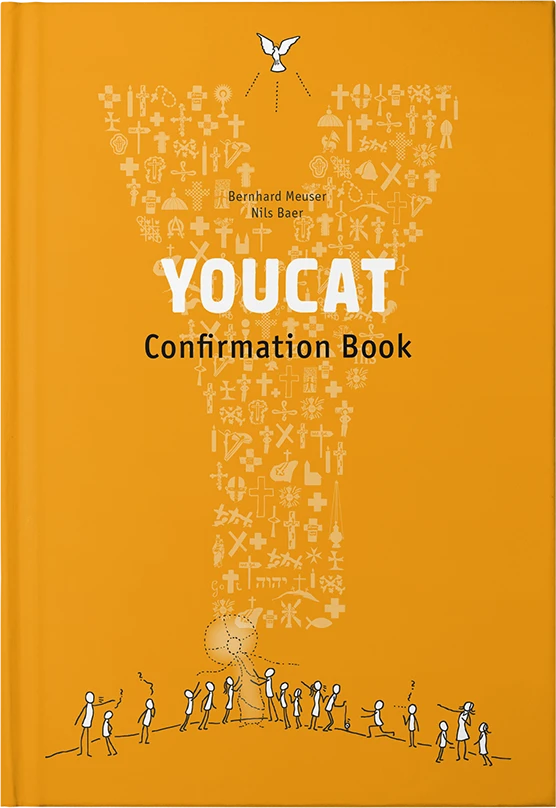

Credopedia
Adultery
Adultery is the fundamental betrayal of love, the violation of a covenant that was made in God’s sight, and an injustice to one’s neighbour.
What is it?
“Adultery,” says YOUCAT 424, ”is committed when two people, at least one of whom is married to someone else, have sexual relations. Adultery is the fundamental betrayal of love, the violation of a covenant that was made in God’s sight, and an injustice to one’s neighbour.”
What does the Holy Bible say?
The fifth of the Ten Commandments says, “You shall not commit adultery.” (Exodus 20,14). However, the understanding of full conjugal love has been slow to develop. Thus, in the Old Testament, we still find men who were married to several wives. Jesus himself explicitly stated the indissolubility of marriage: “Therefore what God has joined together, no human being must separate.” (Mk 10,9) Invoking the original will of the Creator, Jesus thus annulled the Old Covenant’s toleration of divorce. The fact that Jesus dealt mercifully with the adulteress in John 8, 1-11 does not constitute a trivialization. In the Sermon on the Mount, Jesus even intensifies the commandment of fidelity by already qualifying the look inviting to forbidden sex (Mt 5,28) as “adultery”. The high regard for marital fidelity has its foundation in the Old Testament prophets, where adultery becomes a symbol of Israel’s unfaithfulness to God, such as in Hos 2, 21-22, where God says, “I will betroth you to me forever: I will betroth you to me with justice and with judgment, with loyalty and with compassion; I will betroth you to me with fidelity, and you shall know the LORD”
A short YOUCAT-Catechesis
Invitations to adultery
We live in a time when fewer and fewer couples dare to enter into marriage. Too often they saw that their parents’ marriages had only a medium half-life. Many long-term relationships are in crisis. Instead of the one, lifelong marriage, people have become “realistic” and are adjusting to a succession of life-interval partnerships. “Adultery,” once almost a crime, is now becoming “normal”.
Matching theories to changing realities are never long in coming. Recently, behavioural biologists have come to believe that humans are only conditionally monogamous; biogenetically, at least men are programmed to “change” after four years at the latest. Everywhere you read about the stimulating effect of occasional changes of partner. Why do we put up with the dramas of yesterday when the drive question can also be solved pragmatically? Only this 3000-year-old word from the Ten Commandments stands in the way and prevents one or the other from getting involved in the trendy change of style in love. Let’s make it fundamental: It is about two completely different concepts.
Two concepts of love
Concept 1, the new concept, says: man is forever lonely, a kind of metaphysical single. “Love” is the temporary touch of two tangents that lasts as long as the feelings carry. There is no merging (not even sex, which makes you “lose your hearing”).
Concept 2 – the old concept – says: “It is not good for the man to be alone” (Gen 2,18), therefore “‘For this reason a man shall leave his father and mother and be joined to his wife, and the two shall become one flesh’ So they are no longer two, but one flesh. Therefore, what God has joined together, no human being must separate.” (Mt 19, 5-6)
Regarding concept 1, Theodor Weißenborn has said what is needed: “An open marriage is a marriage that has not been made.” If one wants to remain with oneself and not have the fusion, one can neither make a marriage nor break it. The tangential connection of man and woman, which is best occupied with the word “relationship”, stands from the outset under the reservation to be the momentarily best of all conceivable (love) worlds. The breaking point is planned in. Beyond the oaths, in the last corner of the heart, one looks at the partner critically – not lovingly. Is the balance sheet item still on the credit side? Does he/she make me happy? Does he/she understand me? Does he tickle my senses? Do I find him/her attractive? Is the whole thing still worth it? Or couldn’t there be someone somewhere who offers me 100 percent instead of 78-plus? The breaking point becomes the breaking point – and the game starts all over again in a new partner constellation. In the beginning, the hot feelings boil – and on the third day, the thermometer is held into the soup.
I give myself to you as a gift
In Concept 1, no gifts are given. Gifts are irrevocable transfers. This is about bartering: what do you have to offer? What do I have to offer? On virtual dating sites, people check out fancy photos, compare body measurements and income levels, compare presentability, and pit breasts and buttocks against washboard bellies and trendy hairstyles. Most of the offers have small quirks, as is to be expected in the second-hand trade. And more and more of those on the market are somewhat battered objects left behind by advanced age. Their market value is permanently decreasing, despite all-around renewal. Mental scars, age, overweight, children, beer bellies, sagging breasts, baldness, cellulite, job problems tend to position the former “dream partners” in the realm of unsaleability – purely in terms of love.
In the end, we have a society with a high number of embittered people – those who have been eliminated from the game of love because of age, income, appearance and other market criteria. And this is where the truth of Concept 1 comes out: it was never about love – it was about buying. Unfortunately, you are now unsellable.
Get out of loneliness!
Conclusion: Who does not give away himself completely, with skin and hair, forever to another person and is accepted as a gift with similarly insane excess and without ifs and buts, he remains alone, no matter how many partnerships he enters into. Whoever wants to get out of the parallelism of synchronous loneliness has to get involved in concept II, the concept that was designed in the Bible. Here it is about love – and that is a fusion: “So they are no longer two, but one flesh” (Mt 19,6). But how can this be done? Don’t people always get involved in a bargain? Is there a union of man and woman in which one is not (betrayed and) sold?
The love we are talking about here is not a trade. When you trade, you give to get; when you love, you get to give. This love is first of all a rapturous happy amazement at what is unexpectedly given – this pretty girl, for example, who answers “Yes” to the anxious question “Do you love me?”. The essence of this jubilant gift is that it is free – one could not pay for it with money. Yes, if it were paid for with money, it would be prostitution (i.e. not love). And because the gift is so immoderate, the answer can only be immoderate: Devotion without ifs and buts.
But, but, but … say the critics
The honeymoon passes – and then the naked truth comes out: love is a dearly paid balance of interests. No, says the Christian faith. Love is stronger. It is stronger than any partnership cost-benefit calculation. Stronger than the changing desires. Stronger than illnesses and weaknesses of the partners. The love does not stop anymore.
What kind of love doesn’t stop – the critics ask. Because they do not know any. The love that God has brought into the world, Christians say. And this is indeed “the difference that makes the difference,” as Gregory Bateson would say. Christians believe that, first, there is an absolute love – it is with God, nowhere else, human love is relative; that, second, this love exists on earth – admittedly only because God has introduced it here; that, third, human beings are expressly invited to enter into this love of God and all its characteristics as into a ship that has long since sailed. God’s love is above all one thing: it is faithful. Every page of Scripture shows a God who has so bound Himself to us humans that humans can no longer break this covenant. God’s faithful love occurs like permanent irradiation of warmth and light. Whatever people do with this love, how they reject it, defile it and trample it underfoot: God’s love remains faithful. And if people want to love, that is, if they want to enter God’s lifestyle like a moving ship, the adoption of the one great trademark is required of them: faithfulness.
What happens, then, when two hold a wedding?
Christian marriages, according to an old dictum, are “made in heaven”. God does something there. But what? He makes two into one: HE creates it – the real fusion that is glimpsed in loving sex. Two people are taken by the initiative of God into the absoluteness of divine love – and God gives them the strength, the blessing, the power, the steadfastness, that in the future in the middle of a relative world they represent a piece of the absolute, irrevocable love of God through absolute faithfulness. Hence the word of Jesus: “Therefore, what God has joined together, no human being must separate.” (Mt 19,6). The lovers are the image – God is the archetype. They are the franchisees, God is the licensor.
Violations of faithfulness, by the way, occur even then, because Christians are and remain sinners, temptable and weak people. But these violations are anything but peccadilloes, which with a little more mutual tolerance could also be understood as tingling enrichment of a marriage. They are like incitements to mistrust in the love of God. That is why they protrude into the abysmal. And that is why this tool: Do not break the marriage! is so fundamental. Because we could lose faith in love.

YOUCAT Digital
Discover our digital products, which will help you to grow in faith and become missionaries yourself.







